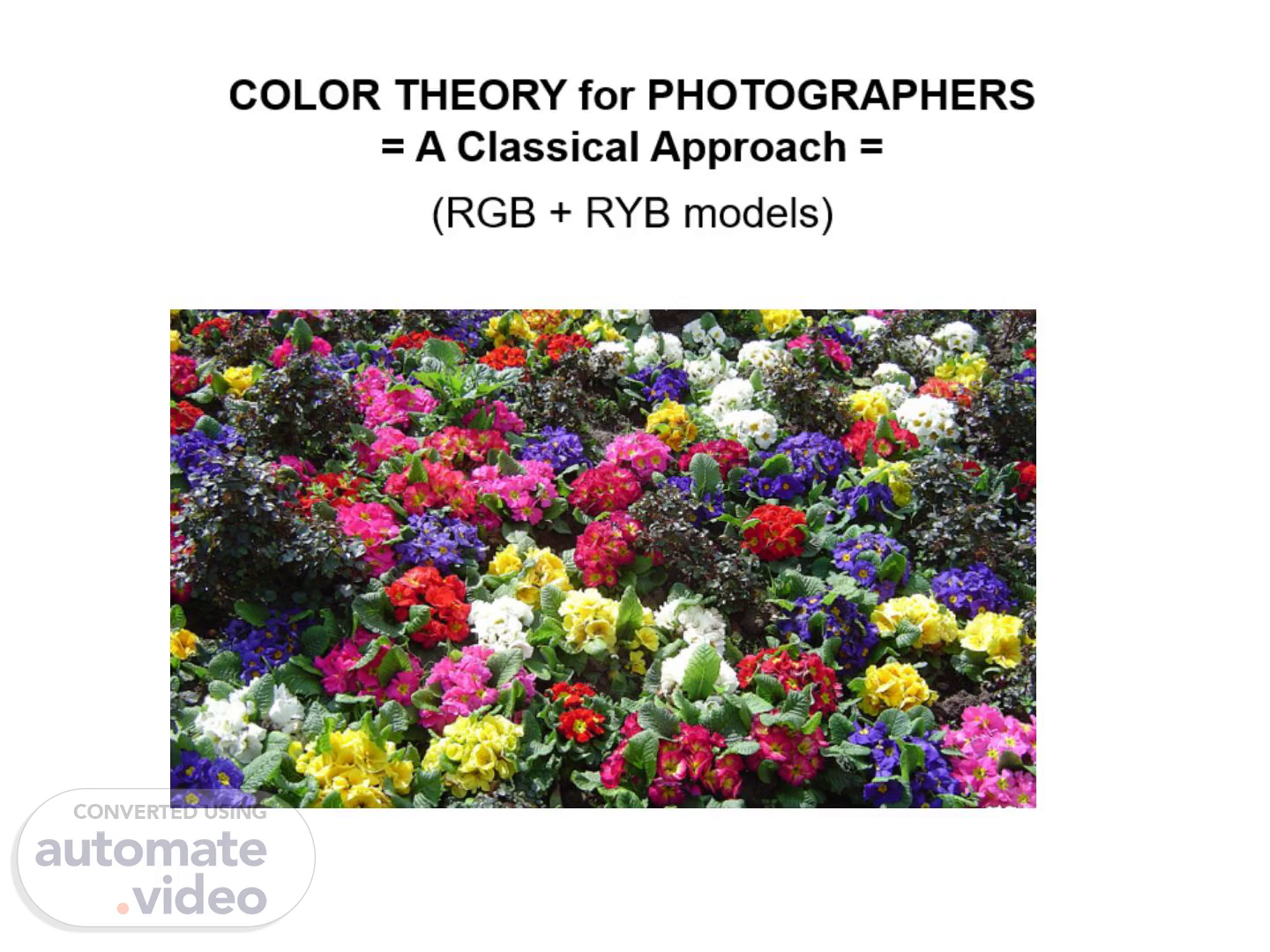
Page 1 (0s)
[Audio] Before I start this presentation, let me remind you a few things: First of all, this presentation provides information and guidance from a photographer's perspective. "Color Theory for Photographers" is a part of my "Introduction to Color Photography Composition" lectures. I developed it many years ago for an art college. Now, for PPG Group, I condensed it to a short presentation. Also, example pictures here are somewhat simplified or exaggerated to demonstrate a point or a concept..
Page 2 (29s)
[Audio] OK… Let's get back to the subject… What is "Color Theory" for Photographers? Colors make your photographs more visually appealing and enhance the mood of your photographs. For us, photographers, "Color Theory" is a collection of fundamental guidelines of "choosing colors" and "using color combinations harmoniously" in our photographs. Color theory is somewhat different for digital photography then classical printed photography. For example, we see the picture on a printed photograph with the help of reflected light. On the other hand, in digital photography, we see the picture with the help of transmitted light, through a television or computer screen. Color Theory is partly "science" and partly "art." To save some time and put things into a logical frame, we shall only cover the basics of science and focus more on artistic concepts. And in the end, you will learn some guidelines and basic "rules-of-thumb" to create or choose harmonious color combinations in your photographs, which can help to take your art to a higher level. However, there are no rigid rules in photography. These rules are generally accepted practices. But remember, the main goal of "Color Photography" is to convey an emotion and to make photographs more interesting, more engaging. Color can evoke emotions in us, change our moods, and, consequently, our behavior. To be able to use colors in esthetically pleasing or in a striking way in our photographs, we need a basic understanding of what the color is and how different colors interact with each other. The study of this topic is called "Color Theory." First of all, we all know that, by definition, "Photography" is "design by light." In other words, the basis of photography is light. To be able to see anything at all, as a physical necessity, light has to come and enter into our eyes. "Color Theory" is a very broad and deep subject. In short, this presentation needed to be simplified, but I did not wish to neglect anything significant. There are a lot of slides in this presentation because photographers have a keen visual perception. For many of us, it is easier to grasp ideas visually. In the first part of this presentation, I will give you a summary of Color Theory. In the second part, I will briefly explain the relationships among colors. At the end of these presentations, we will learn some guidelines and rule-of-thumb to create or select harmonious color combinations that can help you to take your photography to a higher level. This information can also significantly help you when handling colors in post-production. Once more, let's draw your attention to an important point; Sometimes, we call here "rules," but there are no rules in the photography; these are only generally accepted practices. Let's get back to our topic: color theory for photographers and dive in. We know by definition that "photography" is "graphic or picture by light." In other words, the basis of photography is light. As a physical necessity, to see anything, light must come and enter into our eyes. OK... What is light?.